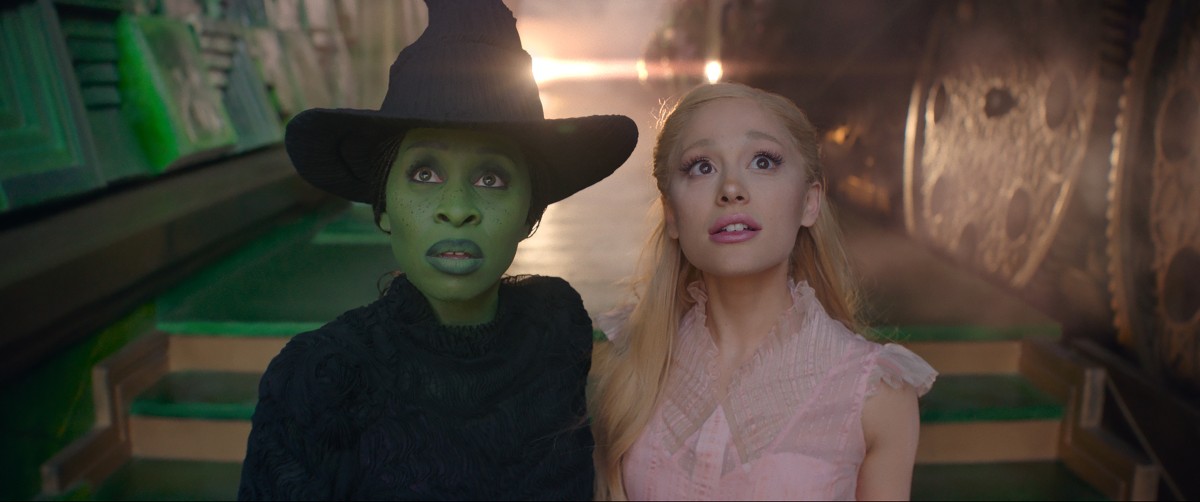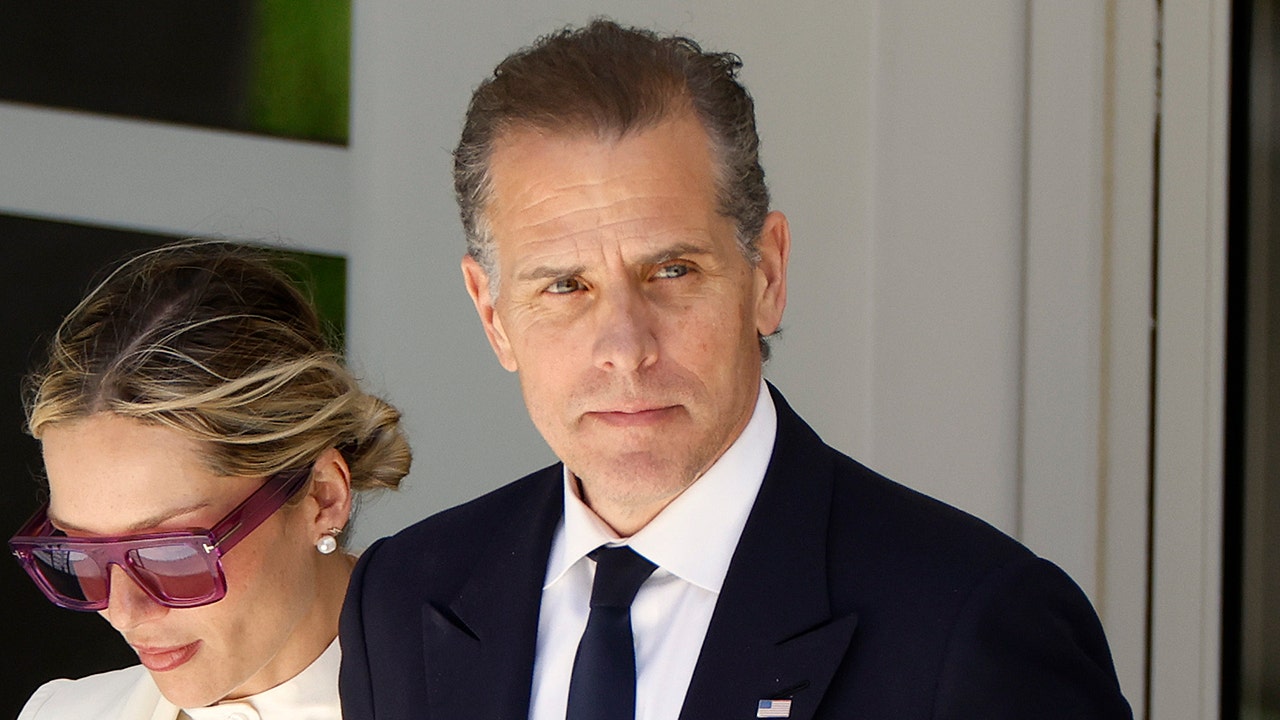Movie Reviews
‘The Last Voyage of the Demeter’ review: Dracula dud sucks

Bram Stoker wrote “Dracula” 126 years ago — somehow, Hollywood is still screwing it up.
There have already been two “Dreck-ulas” in 2023. Back in April came the unfunny “Renfield,” starring Nicolas Cage as the count and Nicholas Hoult as his mistreated assistant.
And now, as if we haven’t been bitten enough already, here’s the new horror film “The Last Voyage of the Demeter,” about the vamp’s not-so-pleasurable cruise to England.
Running time: 118 minutes. Rated R (bloody violence). In theaters Friday.
As always, Dracula sucks blood. But his latest movie simply sucks.
Director André Øvredal’s choppy film is based — as loosely as possible — on the captain’s log from Stoker’s 1897 novel, about the doomed watery journey from Bulgaria to Whitby.
The movie languished in development hell for years, and you have to wonder why so much time and effort went into it.
Anybody with a kindergarten diploma knows that the experience of watching Dracula gradually kill one sailor after another in exactly the same way aboard a medium-size vessel with only a few rooms would turn out to be mind-numbingly boring.
And, oh, has it ever. Øvredal attempts to overcome the lack of an engrossing plot by upping the gore, which has worked wonders for the “Evil Dead” movies. But there’s no creativity or artfulness to this violence. The occasional bashed skull earns a “So what?”
Nothing about “Demeter” is frightening, really, despite the million “He’s behind you!” jump-scares liberally tossed in.
The filmmakers also try to boost the fear factor by turning Dracula (Javier Botet) into an unclothed Gollum-like creature with gray skin and bat wings (the Netflix series “Midnight Mass” did this in a much smarter way).
At first glance, we think he’s a dangerous mythical animal, akin to the Mothman. But then he whispers four words in English. So, one can only conclude that he’s an ugly, soft-spoken, cannibal nudist.
I’m not saying make him Grandpa Munster, but Dracula would be more compelling and bone-chilling as a fully realized character.

The seafarers that Batboy torments by night include Dr. Clemens (Corey Hawkins), stowaway Anna (Aisling Franciosi), Captain Elliot (Liam Cunningham) and first offer Wojcheck (David Dastmalchian).
Each one has a tiny motivation for being there. Clemens is a decent guy who wants to earn a buck; the captain plans to retire to the coast after this crossing; Wojcheck will finally inherit the Demeter; Joseph the chef (Jon Jon Briones) thinks this is punishment from God; and Anna is an old pal of Drac’s.
The actors do what they can, playing cinematic stick figures. Cunningham comes off best because he brings the same moral authority that he did to Davos on “Game of Thrones.”
The cast’s overall hollowness is largely the fault of Bragi Schut and Zak Olkewicz’s script — the characters’ blase attitude while in peril is confounding. We’re two-thirds through the movie and several deaths in before somebody decides they should find the monster responsible.

Um, yeah!
At the start of the movie, the Demeter is shown destroyed and washed ashore in England. So there is, at least, some solace in knowing that “The Last Voyage” is truly the last voyage.

Movie Reviews
Wicked movie review & film summary (2024) | Roger Ebert

The razzle-dazzle that’s Jon M. Chu’s bread and butter is on glorious display in “Wicked,” the big-screen version of the beloved Broadway musical.
When it’s all about the spectacle of big, splashy production numbers, this prequel to “The Wizard of Oz” is thrilling, whether we’re in Munchkinland, the Emerald City or the campus of Shiz University, where a young Wicked Witch of the West and Glinda the Good Witch of the North first cross paths. As we’ve seen from the director’s previous films including “Crazy Rich Asians” and “In the Heights,” Chu is uniquely adept at presenting an enormous song-and-dance extravaganza without getting lost in it. His sense of pacing and perspective draw us in and center us within the swirling fantasy.
It helps greatly that he has deeply talented stars in Cynthia Erivo and Ariana Grande: magnetic multi-hyphenates who can meet every physical and emotional challenge of these iconic characters. Following in the footsteps of Idina Menzel and Kristin Chenoweth would seem like a daunting task, but Erivo and Grande bring their own vocal power and dramatic interpretation to the roles of Elphaba and Glinda, respectively. You truly feel the friendship between these opposites, particularly in one beautiful, wordless dance sequence where they forge their unlikely bond, which is moving in its understatement. That’s the foundation of this story, so it’s crucial that we know their connection is true for its destruction to be meaningful.
Far less effective is the way Chu, working from a script by Winnie Holzman and Dana Fox, based on the novel by Gregory Maguire, wedges in the movie’s heavier themes of authoritarianism. Yes, they are baked into the story: We know from watching 1939’s “The Wizard of Oz” countless times that the wizard is a con artist who rules by fear. His deception is literally one of smoke and mirrors. That’s all in the source material of the “Wicked” stage production, as well, for which Holzman wrote the book and Stephen Schwartz wrote the music and lyrics. Here, in film form, the tone swings awkwardly between upbeat wonder and dark oppression. This is a world in which minorities are hunted, placed in cages and prevented from speaking, where a charismatic leader (a playfully evil Jeff Goldblum) persecutes a woman of color. It is not subtle, and it feels all-too relevant to our times, despite originating decades ago. It also drags down the energy of this epic tale.
And yet, overstuffed as the film is at 2 hours and 40 minutes, this is only part one: “Wicked” ends where the intermission occurs in the stage show, with part two coming in November 2025. It’s a lot to ask of an audience. Still, people who love this story and these characters will be delighted, and there’s much here for people who aren’t familiar with the musical but are looking for a cinematic escape around the holidays.
“Wicked” begins with Grande’s Glinda descending majestically into Munchkinland to inform her enthusiastic fans that the rumors are true: The witch really is dead. Then it flashes back to how she and the green-hued Elphaba (the Wicked Witch’s first name) became unlikely allies in college. Elphaba has always been bullied and ostracized because of the color of her skin; Glinda—or Galinda, as she’s known at this point—is a pretty, pampered mean girl who’s always gotten her way. (Bowen Yang is a hoot as one of her loyal sycophants.)
But once they’re forced to room together, they eventually realize, to their surprise, that they genuinely see each other in a way no one ever has before. Galinda’s makeover anthem “Popular”—one of the most popular songs from the show—is among the film’s highlights, and a great example of the technical prowess “Wicked” offers. The costume design from Paul Tazewell (“West Side Story”) and production design from longtime Christopher Nolan collaborator Nathan Crowley are exquisite throughout but especially here. Alice Brooks’ cinematography is consistently wondrous, but her use of hot pink lighting as Galinda’s at the height of her power is really evocative.
Chu’s usual choreographer, Christopher Scott, delivers again with vibrant, inspired moves, particularly in the elaborate “Dancing Through Life,” which takes place in the school’s rotating, multilevel library. “Bridgerton” star Jonathan Bailey gets a chance to show off his musical theater background here, and he’s terrifically charming as the glib Prince Fiyero, the object of both Elphaba and Galinda’s romantic interests. Michelle Yeoh brings elegance and just a hint of danger to her role as Madame Morrible, the university’s sorcery professor. And Peter Dinklage lends gravitas as the resonant voice of Dr. Dillamond, a goat instructor who, like other talking animals in Oz, finds himself increasingly in peril.
But it’s that connection between Erivo and Grande that gives the film its emotional heft. Erivo does do much with her eyes to convey Elphaba’s sadness and loneliness and, eventually, her hope and determination. There’s a directness about her screen presence that’s immediate and engaging, and of course she can sing the hell out of these demanding songs. Grande meets her note for note and once again displays her comic chops, but it’s the little choices that make her portrayal of the perfect Galinda feel human: a jerky perkiness that’s slightly dorky. The blonde tresses and array of pink dresses scream confidence, but deep down she’s a try-hard whose desire to be liked is her driving motivation.
As undeniably crowd-pleasing as “Wicked” is in its big moments, these smaller and more intimate details are just as magical.
Movie Reviews
Kishkindha Kaandam Movie Review

The Malayalam film Kishkindha Kaandam, directed by Dinjith Ayyathan, hit theaters on September 12, 2024, and quickly became a box office success, earning over ₹70 crore on a modest ₹7 crore budget. With a stellar cast including Asif Ali, Aparna Balamurali, and Vijayaraghavan, this movie has now begun streaming on OTT platform Disney plus Hotstar. Let’s dive into the Kishkindha Kaandam Movie Review to see what makes it stand out.
Plot Overview
Set in a village bordering a forest, the story revolves around Appu Pillai (Vijayaraghavan), a retired army officer living with his son Ajay Chandra (Asif Ali), daughter-in-law Praveena (Vaishnavi Raj), and grandson Chachu (Aarav). Tragedy strikes when Praveena passes away, and Chachu mysteriously disappears.
While the investigation into Chachu’s disappearance forms a crucial part of the narrative, the police station instructs Appu to surrender his licensed gun due to the upcoming elections. However, the gun has been missing for a long time, complicating matters further. The police warn that even a single missing bullet could lead to serious consequences.
As Ajay remarries Aparna (Aparna Balamurali), she moves into the family home and learns that Appu suffers from memory loss. Aparna grows suspicious of Appu’s behavior, particularly his reluctance to let anyone enter his room and his habit of burning items in a secluded area. Her investigation into Chachu’s disappearance and the missing gun forms the crux of the film.
Analysis
Kishkindha Kaandam revolves around three key characters: the father, the son, and the daughter-in-law. Aparna’s desire to find Chachu and bring happiness back to her family drives the first half of the movie. As she uncovers clues linking Appu to Chachu’s disappearance and the missing gun, the tension escalates in the second half.
The narrative cleverly intertwines memory loss, a missing gun, and a child’s disappearance, keeping the audience guessing until the very end. The film’s strength lies in its minimalist approach, focusing on a small cast and localized settings. The title, Kishkindha Kaandam, reflects the village’s unique connection to monkeys, adding a symbolic layer to the plot.
Director Dinjith Ayyathan skillfully maintains suspense without relying on exaggerated drama, keeping the story grounded in realism. This approach makes the twists and turns feel natural and engaging.
Performances
Vijayaraghavan delivers a standout performance as the enigmatic and suspicious Appu Pillai. His portrayal of a man struggling with memory loss while harboring secrets is both compelling and nuanced. Asif Ali shines as Ajay, caught between family responsibilities and professional duties. Aparna Balamurali impresses with her natural acting, convincingly portraying a new bride navigating the complexities of her new family while trying to uncover the truth.
Technical Aspects
Cinematography: Ramesh’s visuals beautifully capture the lush, forested village, enhancing the story’s atmosphere.
Music: Mujeeb Majeed’s haunting background score elevates the suspense.
Editing: Suraj’s crisp editing ensures a tight narrative, particularly in the second half.
Malayalam cinema continues its tradition of seamlessly integrating stories with authentic locations, making the events on screen feel believable and immersive.
Verdict
Kishkindha Kaandam is a captivating mystery thriller with strong performances, a well-crafted screenplay, and stunning visuals. It’s a testament to the power of storytelling and naturalistic filmmaking. This is a movie that can be enjoyed with the whole family.
Movie Reviews
‘Stella Stevens: The Last Starlet’ Review: A Loving, Insightful Documentary Tribute to an Underrated Actress

Andrew Stevens pays loving but not hagiographic tribute to his late mother, famed actress Stella Stevens, in his documentary recently showcased at the Fort Lauderdale International Film Festival. The film convincingly makes the case that its subject, best known for her performances in such pictures as The Poseidon Adventure and The Nutty Professor, is severely underrated, both as an actress and social activist. Stella Stevens: The Last Starlet aims to rectify that perception and, thanks to numerous clips of her work and effusive commentary by the likes of Quentin Tarantino and Vivica A. Fox, it succeeds beautifully.
The filmmaker (who appears frequently) admits that his relationship with his mother was rocky, to say the least, in the early years. Born in Yazoo City, Mississippi, Stevens got married at age 16 and had Andrew, her first and only child, six months later. The marriage soon dissolved, and when she moved to Hollywood to pursue an acting career, she took Andrew to California with her illegally. His father and grandfather later showed up and spirited him away, resulting in an ugly custody battle and Andrew not having a real relationship with his mother until he turned 16.
Stella Stevens: The Last Starlet
The Bottom Line A well-deserved and long overdue cinematic portrait.
Venue: Fort Lauderdale International Film Festival (American Indie)
Director-screenwriter: Andrew Stevens
1 hour 39 minutes
Stevens was soon signed to 20th Century Fox, where she was groomed to be a starlet in the mold of Marilyn Monroe and Mamie Van Doren. Her sexpot image was further confirmed when she appeared as a Playboy centerfold, though she had desperately tried to purchase the nude images back from Hugh Hefner, who refused.
Her career quickly took off thanks to such films as Li’l Abner, in which she played the wonderfully named “Appasionata Von Climax,” and the musical Say One for Me with Bing Crosby, for which she received a Golden Globe award for New Star of the Year.
“Some of the most fun parts I’ve played are nymphomaniacs,” Stevens amusingly points out in one of many interviews featured here. Some of them are shown via archival clips from various talk show appearances, while others are recreated using a lookalike actress (Lindsie Kongsore). While the device is jarring at first, it admittedly breathes life into Stevens’ words. But the filmmaker gets too carried away with it at times, as when he unnecessarily uses an actor to play a film critic reading an excerpt from a review.
There are plenty of juicy anecdotes and revelations in the documentary, one of the most priceless being Stevens’ account of co-star Bobby Darin getting a much noticeable erection while they shot a kissing scene. She also reveals that she had no desire to appear with Elvis Presley in Girls! Girls! Girls! and only agreed to do it after she was promised that she would get to play opposite Montgomery Clift in her next film. The Clift project never materialized, and she could never bring herself to watch the Presley one.
We learn of her many romances, including an affair with the notorious and very much married Hollywood fixer Sidney Korshak and a lengthy relationship with actor Skip Ward, who took financial advantage of her and was frequently unfaithful.
The documentary makes a strong case for Stevens’ talent — particularly her formidable comic chops, as illustrated in numerous clips of her work, including from an episode of Bonanza for which she won acclaim. She held her own opposite Jerry Lewis in The Nutty Professor and sparkled in the old-fashioned comedy How to Save a Marriage and Ruin Your Life opposite Dean Martin, with whom she had previously appeared in the Matt Helm spy spoof The Silencers. She received critical acclaim for her exuberant turn in Sam Peckinpah’s 1970 The Ballad of Cable Hogue, though the film was a flop. When she did appear in hits, such as the hugely popular disaster pic The Poseidon Adventure, it didn’t give her career much traction.
She later became an iconic figure for Black audiences, thanks to her groundbreaking interracial love scene with Jim Brown in the blaxploitation hit Slaughter and her campy villainous turn in Cleopatra Jones and the Casino of Gold. But what she really wanted to do, as they say, was direct. She finally got her chance in 1989 with an indie feature called The Ranch, starring her son Andrew (he later returned the favor, directing her in the 1991 B-movie The Terror Within II), and a feminist-themed documentary, The American Heroine, which was never released.
Besides the ample clips from her roles and television appearances, the documentary includes fascinating home movies, personal photographs, and insightful commentary from various figures including film historians Leonard Maltin and Courtney Joyner. But it’s Tarantino who unsurprisingly proves the highlight, articulately gushing about Stevens’ performances with the passion of a true fan. (Introducing The Last Starlet at the festival, Andrew admitted that he basically handed the ball to Tarantino and let him run with it.)
While Stevens’ big-screen career eventually fizzled, she never stopped working, appearing in dozens of direct-to-video movies and TV series until her final appearance in something called Megaconda in 2010. “If the idea of being an actress is to work, she worked. She worked a lot,” Tarantino points out.
Her final days were sad ones, as she slowly succumbed to Alzheimer’s disease until her death at 84 in 2023. Much to the consternation of her son and her many fans, she was not included in the Academy Awards’ annual “In Memoriam” segment and never received a star on the Hollywood Walk of Fame. The latter is a rebuff that should be corrected — especially if Stella Stevens: The Last Starlet gets the exposure it deserves.
-

 News1 week ago
News1 week agoHerbert Smith Freehills to merge with US-based law firm Kramer Levin
-
/cdn.vox-cdn.com/uploads/chorus_asset/file/25724877/Super_Nintendo_World.png)
/cdn.vox-cdn.com/uploads/chorus_asset/file/25724877/Super_Nintendo_World.png) Technology1 week ago
Technology1 week agoThe next Nintendo Direct is all about Super Nintendo World’s Donkey Kong Country
-
Business6 days ago
Column: OpenAI just scored a huge victory in a copyright case … or did it?
-

 Health6 days ago
Health6 days agoBird flu leaves teen in critical condition after country's first reported case
-

 Business3 days ago
Business3 days agoColumn: Molly White's message for journalists going freelance — be ready for the pitfalls
-
Politics1 week ago
Editorial: Abortion was on ballots across the country in this election. The results are encouraging
-
World7 days ago
Sarah Palin, NY Times Have Explored Settlement, as Judge Sets Defamation Retrial
-

 Politics2 days ago
Politics2 days agoTrump taps FCC member Brendan Carr to lead agency: 'Warrior for Free Speech'




















